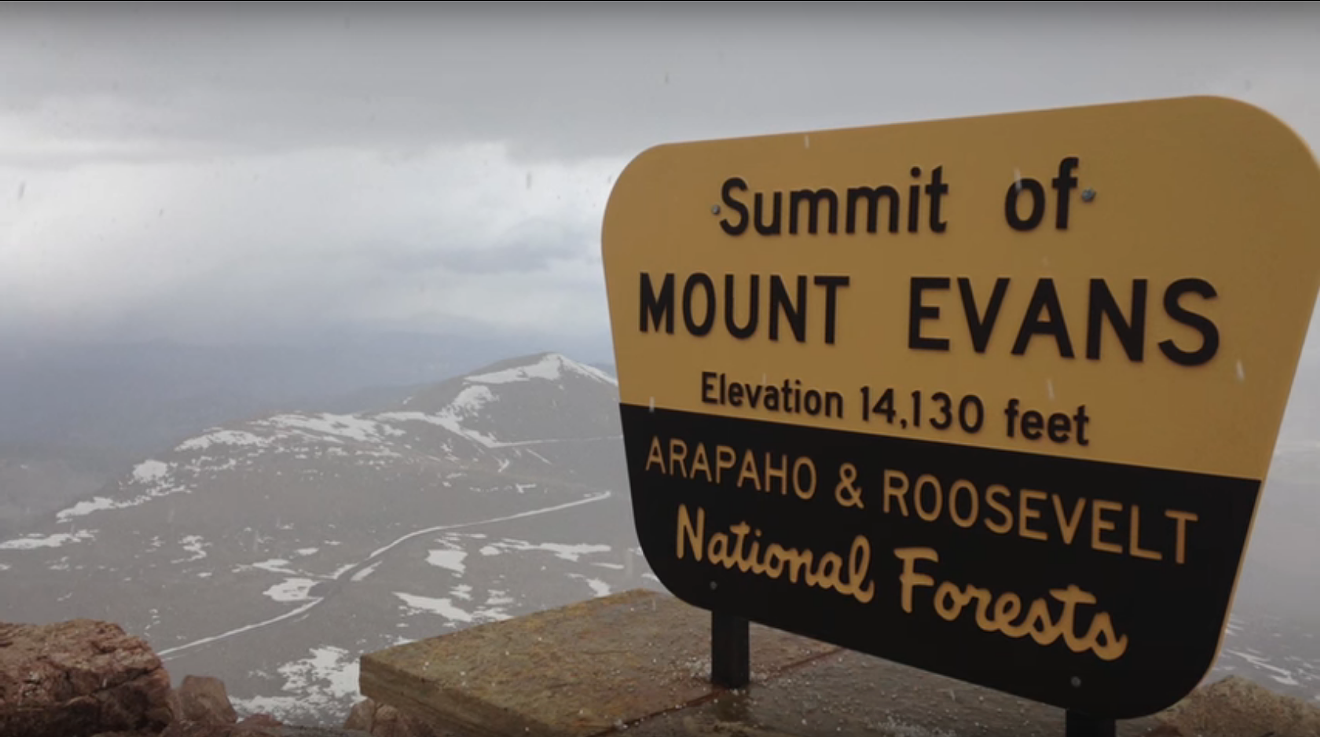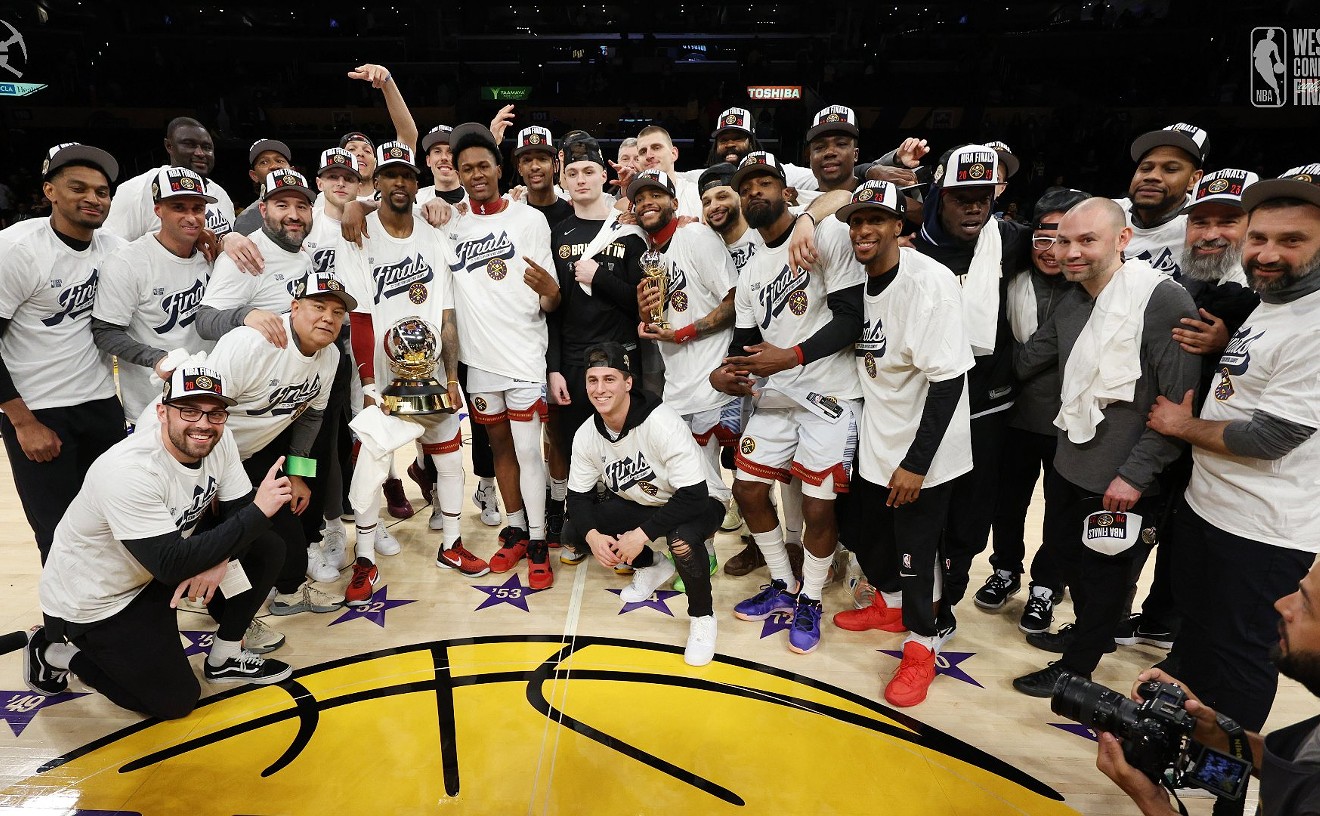This mountain was originally called Mount Rosa or Mount Rosalie, but in 1895 it was renamed for John Evans, the second territorial governor, who’d been forced to resign his post in 1865 because of his role in the Sand Creek Massacre. In 1864, Evans had encouraged Colonel John Chivington, a fellow Methodist minister with whom he’d co-founded the Colorado Seminary (today the University of Denver), to pull together the ragtag volunteers of the 3rd Colorado Cavalry, and while Evans might not have given the orders for Chivington to ride out on the plains with his men and massacre more than 200 members of the Arapaho and Cheyenne tribes, he created the climate that made the slaughter possible. That’s what a DU group studying Evans’s role determined a few years ago, as it grappled with the inglorious legacy of its founder, whose name lives on through a professorship and assorted buildings, as well as a street that runs right through the campus.
No fewer than four federal investigations had arrived at the same conclusion 150 years earlier as they considered reports of what Chivington’s men had done at Sand Creek, a peaceful camp whose residents believed they were under the protection of the U.S. Army. Congress determined that the actions indeed constituted a “massacre” — and this was during the Civil War, which saw more than its share of horrors.
Still, three decades later, memories of the past were cloudy enough that Evans was honored with his own mountain. And at the turn of the last century, Sand Creek was demoted to a “battle” on the Civil War monument at the State Capitol.
Over the past several decades, though, as the forgotten history of the Sand Creek Massacre has been recalled (the killing grounds, 170 miles southwest of the then-frontier town of Denver, were named a National Historic Site in 2002), campaigns have started up to remove that Civil War monument and change the name of Mount Evans. Last June, teacher Kathleen Tynan-Ridgeway sent a request to the U.S. Board on Geographic Names, part of the U.S. Geological Survey, that the peak be renamed Mt. Cheyenne Arapaho. “Let us be known in history,” her petition reads, “as the generation who took responsibility for bigoted, tyrannical and ignorant decisions/policies and made amends.” Not long after, the USGS received a second request, this one suggesting that Mount Evans be transformed into Mount Soule, in honor of Silas Soule, the Army captain who refused to participate in the massacre, testified before Congress about Chivington’s actions, and was assassinated on the streets of Denver in April 1865 as his reward for doing the right thing.
Such requests set “a lot of moving parts” in motion, says USGS geographer Jennifer Runyon. After Tynan-Ridgeway’s request arrived, the USGS contacted the Denver Department of Parks and Recreation, since part of Mount Evans, including Summit Lake, by the peak, is a Denver Mountain Park; the parks department passed the proposal on to the Denver American Indian Commission. The USGS reached out to Clear Creek County, where the mountain sits; “They want to leave well enough alone,” says Runyon. The USGS also shared both requests with the Colorado Commission of Indian Affairs; the Ute Mountain Ute and Southern Ute tribes will discuss them at a meeting on June 30. The USGS has not yet heard back from representatives of either the Cheyenne or Arapaho — but then, those tribes fled the territory of Colorado after the massacre and are now based on reservations in Oklahoma, Wyoming and Montana.

In 2014, Governor John Hickenlooper apologized to the descendents of the Sand Creek Massacre.
Brandon Marshall
Hickenlooper did not ignore demands to recognize the 150th anniversary of the Sand Creek Massacre, however. He named his own commission to consider how the dark day of November 29, 1864, should be remembered; the group met for months. And when the annual Sand Creek Massacre Healing Run arrived at the State Capitol on December 3, 2014, Hickenlooper apologized to the descendants of those who were killed at Sand Creek. “This has been a day too long in coming. On behalf of the state of Colorado, I want to apologize,” he said, and he didn’t end there. “We will not run from our history. I will make sure this history continues to be told.”
Which is precisely what the descendants wanted. During all those commission meetings, potential name changes had continually come up. DU was trying to decide what to do about Evans; the road to the massacre site led past the ghost town of Chivington. But tribal representatives agreed: Rather than change names to erase the past, history should be told, and told accurately.
Back in 1999, a plaque had been placed near the Civil War monument at the Capitol, explaining what had really happened at Sand Creek. The tribal reps now pushed to have an entire memorial to the massacre installed on the Capitol grounds. But although Hickenlooper supported the project, it’s been stalled over location concerns.
And now the USGS finds itself stalled by the lack of a state names authority. Runyon finally sent a package to Governor Jared Polis, summarizing all the pending name-change proposals in the state for places on federal land; there are seven in all, including the two Mount Evans requests. While the governor’s office acknowledges that the packet has been received, the USGS is still waiting for Colorado to get back in the name-change game.
In these sensitive times, more requests are inevitable, though not all will involve the federal government...or sovereign Indian nations such as the Cheyenne and Arapaho.
This spring, the Cherry Hills Village City Council gave the name of Old Cherry Hills to a subdivision that had started as Swastika Acres, long before the Nazis adopted the symbol as their own. Soon after, the original campus of the Denver School of Science and Technology changed its name from DSST Stapleton to DSST Montview. Denver’s Stapleton neighborhood, where the school is located, was named for the city’s original airport, which honored Mayor Benjamin Stapleton, a five-term mayor of Denver whose first term happened to coincide with his very active membership in the Ku Klux Klan. Although Stapleton later denounced his involvement in the KKK, the school isn’t the only organization trying to shed his name.
Last year, rebellious members of the Downtown Y objected to the facility being renamed Benjamin F. Stapleton YMCA in honor of Mayor Stapleton’s son, a major benefactor. And property owners in Stapleton are currently voting on whether they want to change the name of their neighborhood altogether; the Change the Name Stapleton Facebook page is running the referendum, with a deadline of July 15. “We believe that this issue should be viewed in its context: our city’s history of systemic racism, antisemitism, and homophobia designed to exclude certain people from the most ‘desirable’ neighborhoods,” urges the Brave Coalition, which is pushing the change. “From outright bans, to discriminatory loan programs, to more subtle messages, let’s end the cycle of unwelcome. This is as important now as ever, as incidents of hate are still prevalent in Denver.”
The vote isn’t quite as sticky as it might be, since the man elected governor last November was Polis (original name: Jared Polis Schutz), and not his opponent, Walker Stapleton, great-grandson of the notorious Ben Stapleton.
These days, the hottest name in Colorado belongs to a place, not a person. The Jefferson County School District plans to conduct a survey on what should be done with Columbine High School, which has attracted both copycats and curiosity seekers who want to see the place where twelve students and a teacher lost their lives; options include knocking down the building and replacing it, but keeping the Columbine name.
A week before the twentieth anniversary of that massacre, a sad eighteen-year-old traveled to Denver from Florida, bought a shotgun a mile from the school, and then headed...not to Columbine, but up into the mountains. While warnings that a Columbine-obsessed, gun-armed girl was on the loose held the metro area hostage for more than a day, she was already dead. She’d gotten a ride to Echo Lake, where she’d shot herself...on the road to the top of Mount Evans.
What’s in a name?














